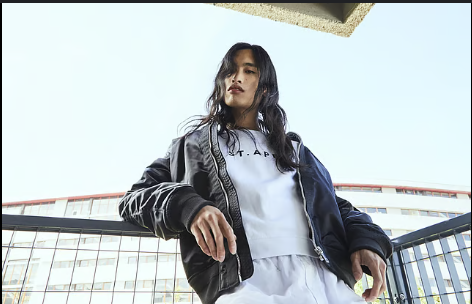Introduction to Functional Clothing
- The Benefits of Functionality in Everyday Wear
- Popular Functional Clothing Trends
- The Role of Technology in Fashion
- Balancing Aesthetics and Practicality
- Future of Functional Fashion
- Conclusion: Why Functional Fashion Matters
Introduction to Functional Clothing
In an era where urban living demands clothing that caters to all aspects of our lives, functional clothing emerges as a beacon of modern style and utility. With the urban landscape constantly shifting, people are seeking garments that reflect the dynamism of their lives—styles that are as adaptable as fashionable. This move towards adaptability has propelled the growth of apparel that champions practicality while maintaining a stylish aesthetic. For instance, busy professionals and adventurers are finding solace in the best clothes for concealed carry, a trend where concealed carry fashion coalesces with everyday wear to meet security needs and style preferences. This shift indicates a broader transformation in our perceptions of what clothing should offer, beyond the superficial appeal of fabrics and forms.
The Benefits of Functionality in Everyday Wear
Functional clothing introduces many benefits, each contributing to an enhanced experience in daily wear. At the forefront is comfort—materials designed for function often aim to improve wearability, incorporating breathable fabrics and ergonomic designs that allow for fluid movement. Yet, this is just the beginning. Many such garments are constructed with longevity in mind, bringing to the forefront features like resilience against weather extremities, added pockets for convenience, and integrated antimicrobial properties, enhancing hygiene. With growing awareness surrounding environmental issues, there has also been a noticeable increase in the production of sustainable, functional clothing. Fabrics made from recycled or biodegradable materials are becoming a staple, reflecting consumer conscientiousness about the planet’s well-being. This holistic approach to garment construction amplifies functional fashion’s appeal, speaking volumes to those who seek practicality without compromising ethical values.
Popular Functional Clothing Trends
The fashion industry is no stranger to trends, and the functional clothing market is no exception. One of the most notable trends is the rise of athleisure. Athleisure provides performance-focused and stylish garments by blurring the lines between athletic wear and leisure clothing. Consider yoga pants appropriate for informal coffee dates and intense workouts. Another trend gaining traction is the use of adaptive clothing designed to cater to the varying physical needs of individuals, ensuring both comfort and accessibility. Furthermore, modular clothing—a concept where pieces are interchangeable and versatile—has also become significant, as seen in creations like jackets doubling as capes or vests. Trends such as these, which align with the contemporary need for dynamic and adaptable clothing solutions, are revolutionizing how consumers perceive fashion in their everyday lives.
The Role of Technology in Fashion
As we delve into the intersection of fashion and technology, it becomes evident that their coexistence is transforming the sartorial landscape. Smart textiles, a groundbreaking development, enable fabrics to perform various functions—from regulating body temperature to monitoring health indicators. This symbiosis extends beyond fabrics; the rise of wearable technology, such as jackets with integrated solar panels for charging devices or shoes that track your steps, is a testament to technology’s vast potential in redefining apparel. Moreover, 3D printing advancements allow designers to create customized clothing, enhancing personal expression through unique designs. These technological innovations improve the practicality of clothing and usher in a new era where fashion is inextricably linked to individual and technological connectivity. Looking ahead, technology’s role in fashion promises to deliver even more groundbreaking developments, fortifying its position as an indispensable part of clothing design, bright fabrics, and wearable tech.
Balancing Aesthetics and Practicality
To succeed in the functional fashion industry, designers need to have the ability to blend functionality with aesthetics. Fusing style and function often requires a nuanced understanding of fabric properties and technological enhancements while ensuring the final product is appealing and fashion-forward. At its core, this balance lies in the perception that clothing is not just a piece of utility but an expression of personal style and identity. By merging innovative design approaches, like streamlined silhouettes or incorporating bold patterns, designers craft pieces that speak to the dual needs of function and fashion. This synthesis appeals to the savvy consumer who prizes versatility and offers limitless creativity for designers willing to innovate and reimagine the future of fashion attire.
Future of Functional Fashion
As we peer into the future of functional fashion, the horizon is teeming with potential and innovation. With the advent of even more innovative textiles, clothing will likely evolve to meet previously unimaginable needs—anticipate garments that adapt to environmental changes or garments embedded with AI, predicting and adjusting to user preferences. Innovations involving augmented reality in clothing design could allow consumers to virtually tailor outfits to their preferences before manufacturing, reducing waste and enhancing personalization. Moreover, as consumers increasingly prioritize eco-conscious choices, the trend toward sustainable, multifunctional garments will continue to rise. This trajectory aligns with global initiatives towards responsible consumption and production, promising a future where functional fashion is more innovative and extends its role in preserving the planet’s functionality and style.
Conclusion: Why Functional Fashion Matters
Functional fashion is an essential facet of modern living in a world of challenges and fast-paced developments. It encapsulates that clothing must evolve to equip individuals with just as versatile and chic garments. As functional fashion becomes more integrated into everyday life, it redefines perceptions of clothing into something more profound—a tool for enhancing personal efficiency, empowerment, and environmental consciousness. Therefore, as we embrace this transformation, functional fashion is not merely a fleeting trend but a foundational aspect of how we dress, live, and shape our identities in the bustling urban landscape.


